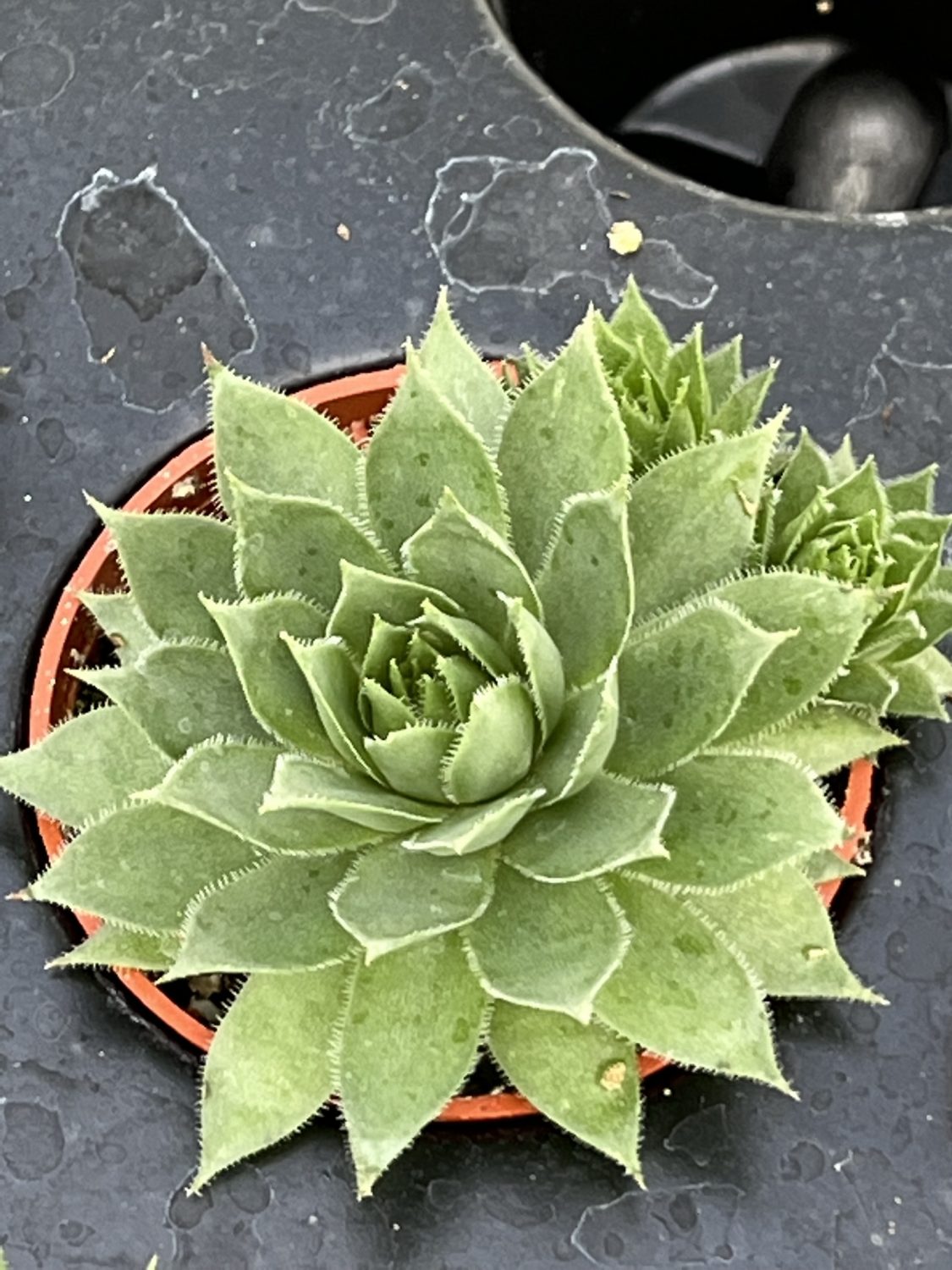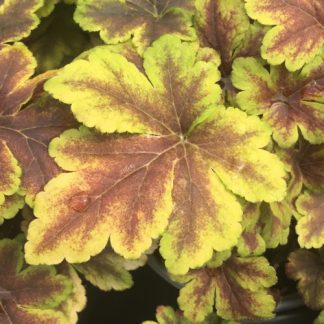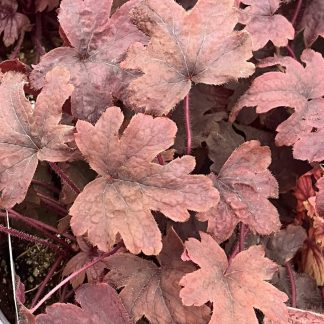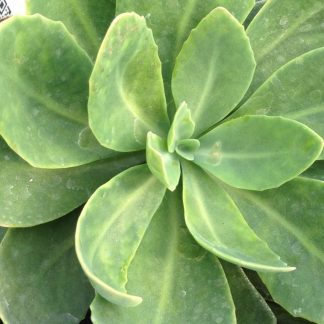Description
Killer Green: The Hen-and-Chicks That Keeps on Giving
Welcome! If you love plants that ask for very little yet give you dazzling color all year, Sempervivum ‘Killer Green’ is ready to move in. This hardy succulent, often called “hen and chicks,” forms tidy rosettes that multiply into a living quilt. In other words, you get drama without the drama. Over the next few minutes, we’ll walk through every detail— what makes ‘Killer Green’ special, how you can help it thrive, and why it belongs in rock gardens, patio bowls, and even tiny fairy pots. Let’s dig in, together.
Meet ‘Killer Green’: A Living Jewel
You notice the rosettes first. Each one is a perfect circle of pointed leaves that glow deep emerald at the heart and fade to lime near the tips. In bright sun, a thin red edge may appear, giving every rosette a painted look. Because Sempervivum means “always alive,” these plants stay vibrant even in snow or scorching heat.
A single rosette is the “hen.” Around her, small offsets— the “chicks”— pop out on short runners. After more than a year or two, the hen can form a flower stalk. It sends up starry pink blooms that feed bees and cheers us, too. The hen then finishes her life, but the chicks quickly fill the space, so the show never ends.
‘Killer Green’ stays compact, about 3 inches tall and 5 inches wide. Yet a colony of them can spread to blanket a shallow bowl in one growing season. That makes the plant perfect for edges, cracks between stepping-stones, or those shallow pots you never know how to fill.
Roots of Resilience: History and Heritage
Sempervivums come from rocky slopes in Europe, North Africa, and western Asia. Long ago, families tucked them on cottage roofs to guard against lightning. Monks planted them near monastery walls because nothing else survived the thin soil. Today breeders lean into that natural grit, selecting forms with richer color or tighter rosettes. ‘Killer Green’ is one of those newer picks. It keeps the ancient toughness but adds a saturated green that pops against stone, gravel, or even snow.
Because we share that history when we place a rosette on a porch rail, we become part of a line of gardeners stretching back centuries. But most of all, we gain a friend that handles forgetful watering and harsh weather without complaint.
Choosing the Right Spot: Pots, Rocks, and Beyond
Sunlight
- Full sun is best. Aim for 6 or more hours.
- Morning sun plus light afternoon shade works in very hot zones.
- Too little light leads to stretched, floppy growth.
Soil
- Think “gritty and quick.” Use cactus mix or make your own with equal parts potting soil, coarse sand, and perlite.
- Instead of rich compost, add a sprinkle of fine gravel. The roots need air more than food.
Containers and Beds
- Shallow dishes, strawberry jars, and hypertufa troughs shine with ‘Killer Green’.
- In the ground, look for slopes, walls, or the sunny side of boulders. Good drainage is the secret handshake.
Spacing
Give each rosette 2 inches of breathing room. They will close the gap in a single season, weaving that classic hen-and-chicks mat.
The Daily Routine: How to Care for ‘Killer Green’
Water
Water deeply, then let the soil go bone-dry before the next drink. In other words, mimic a mountain shower, not a daily mist. During winter dormancy, natural rain or snow may be enough.
Feeding
Skip the fertilizer most of the time. Every spring, you can sprinkle a teaspoon of slow-release, low-nitrogen food on a large pot, but only if growth looks sluggish.
Temperature
These succulents shrug off cold down to -30 °F. In steamy summers, airflow is key. Space the pots so hot air can move, and avoid heavy mulch that traps moisture.
Grooming
- Twist away dried leaves at the base to keep the rosettes crisp.
- Cut spent bloom stalks when flowers fade.
- Remove any hen that finishes her life, and slide the nearest chick into place.
Pets and Kids
Leaves are non-toxic. Still, place the pots where curious pets won’t tip them over.
Seasonal Tune-Up: Year-Round Care Calendar
Spring (March–May)
- Check for winter rot. Remove soggy leaves.
- Repot crowded clumps before new roots sprint.
- Start light watering as temperatures rise.
Summer (June–August)
- Water when the soil is dry two knuckles down.
- Watch for bloom stalks; stake if they lean.
- Offer afternoon shade in zones above 9.
Fall (September–October)
- Ease up on water as nights cool.
- Divide offsets and share with friends.
- Clean fallen leaves so moisture can’t hide.
Winter (November–February)
- Keep pots on the dry side.
- Protect from standing water, not from cold.
- Enjoy the rosettes peeking through frost like tiny green roses.
Propagation Party: Growing New Chicks
After more than one growing season, clusters of chicks gather at the hen’s feet. To spread the joy:
- Lift Gently. Hold the chick by its leaf base, wiggle, and it pops free with a thin root.
- Dry Overnight. Set it on a tray so the break can callus.
- Plant Shallow. Press into gritty soil, barely covering the root.
- Wait and Watch. Skip water for one week. After roots grip, resume the normal routine.
Soon you’ll have enough ‘Killer Green’ to swap, sell, or weave into living wreaths.
Troubleshooting: Common Pests and Problems
| Issue | Quick Sign | Simple Fix |
|---|---|---|
| Over-watering | Mushy leaves, black centers | Remove soggy parts, dry soil fully, reduce watering frequency. |
| Mealybugs | White cottony dots | Dab with cotton swab dipped in rubbing alcohol every few days until gone. |
| Root rot in winter | Whole rosette collapses | Improve drainage, lift plants onto pot feet, water only on warm days. |
| Stretching (etiolation) | Rosette opens wide and pale | Move to brighter light, trim back leggy stems, replant offsets tightly. |
Remember, dryness and sun are your biggest allies. Problems fade fast when you return to those two basics.
Creative Companions: Design Ideas and Pairings
- Rock-Garden Rainbow: Mix ‘Killer Green’ with red-tipped ‘Chocolate Kiss’ and gold Sedum ‘Angelina’. The trio glows year-round.
- Tabletop Zen Tray: Nest rosettes among river stones and a small driftwood stick. Add a single miniature lantern for night-time charm.
- Living Wall Pocket: Slide chicks into felt wall pockets. After more than a month, they knit together a green mosaic that needs almost no care.
- Fairy Door Welcome: Place a thumb-size rosette beside a tiny door at the base of a bonsai. Kids—and grown-ups—will grin every time they pass.
Because Sempervivums share soil and space so well, feel free to experiment. Instead of worrying, enjoy the play.
Let’s Watch the Rosettes Roll On
We have traveled from the rocky homelands of Sempervivums to your own back patio. Along the way, we met ‘Killer Green’—a plant that laughs at heat, shrugs at cold, and keeps producing fresh chicks for years. When you give it sun, quick-draining soil, and a thoughtful drink now and then, it rewards you with emerald rosettes that never quit.
So scoop a handful of gritty mix, pick a sunny spot, and tuck in your first hen today. Before long, you and ‘Killer Green’ will share a patchwork of color that surprises neighbors and delights pollinators. Best of all, you will discover just how easy it is to grow something that looks this good, all the time.
Here’s to endless circles of green, and the joy we grow together!




